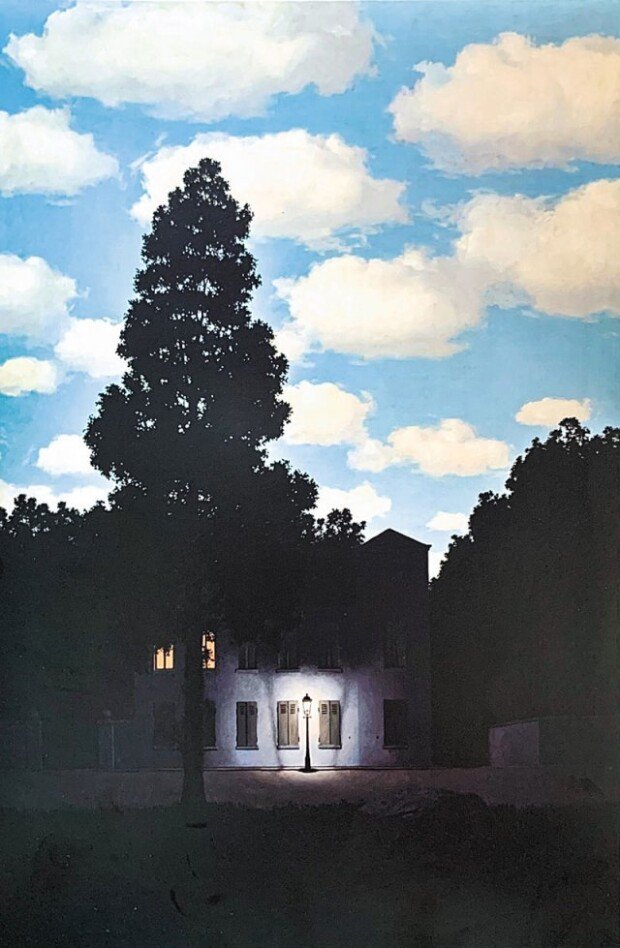A surreal world
A surreal world
Posted March. 10, 2022 08:03,
Updated March. 10, 2022 08:03

Some things in this world cannot co-exist - life and death; day and night; winner and loser. Surreal artist René Magritte, however, thought otherwise. He would often paint opposite objects together. The painting “Empire of Light” features day and night. Why did the artist depict the painting in this manner?
The Belgian surrealist artist worked in Paris and Brussels, leading the surreal artist movement. Graduating from art college, he worked as a commercial artist, using his spare time to create Impressionist, Futurist and Cubism paintings. His style of painting changed course to surrealist when he encountered paintings by Giorgio de Chirico in 1920. Magritte’s paintings feature everyday objects being placed on canvas in unusual sizes and arrangement, sparking curiosity. This painting is a series of the Empire of Light, which he had worked on for twenty years from 1948 until his death. A blue sky hangs over a night landscape against a quiet house. A world with day and night at the same time! Such is impossible in reality, but there is a link that connects the night and the sky in daytime. The light from the window and streetlights connecting with the sunlight beyond the painting. Magritte created 27 paintings under the same theme, one of which sold for 77.95 million U.S. dollars at Sotheby’s on March 2, the second highest price among his works.
Magritte’s paintings lead us to a world that surpasses time, idealities, and the world as we know it. In his paintings we see a world where day and night, light and darkness, nature and man-made, hope and despair exist. Concepts that cannot exist together in reality connect in harmony. It is surreal but an ideal world. Magritte remained faithful to this subject throughout his life and passed away without finishing his last piece of work. Perhaps he had dreamed of such a surreal world all his life because it does not exist.



![[김순덕의 도발] ‘李부터 연임’ 개헌, 이 대통령은 가능성을 말했다](https://dimg.donga.com/c/138/175/90/1/wps/NEWS/IMAGE/2026/01/16/133172656.1.jpg)



